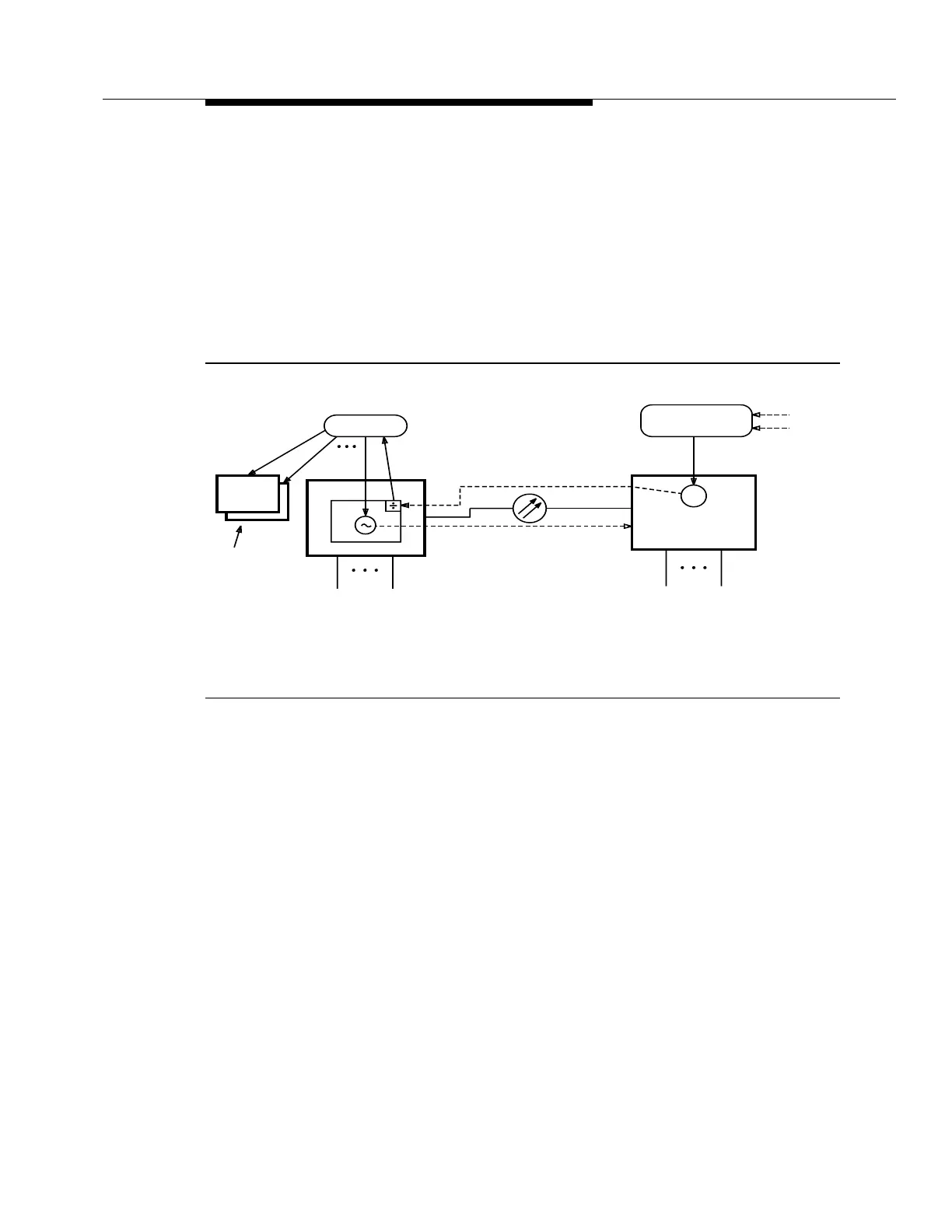363-206-285
Transmission and Synchronization Interfaces
Issue 3 June 2001
5-57
With OC-N timing distribution, the OC-N line signal, rather than a DS1 multiplexed
into the SONET payload, will provide a timing transport mechanism better suited
to a complex, heavily interconnected SONET network. In this configuration, a DS1
reference from the CO BITS clock still times the OC-N transmitted to the remote
site. At the remote site, a DS1 output reference is created directly from the
received OC-N signal (Figure 5-28).
The stratum level of the BITS clock at the CO must be equal to or better (more
accurate) than the stratum level of the BITS clocks used at the RT site. This is
necessary to maintain the stratum level hierarchy.
Figure 5-28. OC-N Derived DS1 Timing Reference
OC-N timing distribution has several potential advantages. It preserves transport
bandwidth for customer services and guarantees a high-quality timing signal.
Also, as the CO architecture evolves to replace DSX interconnects with SONET
EC-1 and IS-3 interconnects and direct OC-N interfaces, OC-N distribution
becomes more efficient than multiplexing DS1 references into an access facility in
the CO.
DDM-2000
Other
Network
Elements
DS1
DS1 out
DS1
External Clock
(Stratum 3 or better)
DDM-2000
RT
CO
Bits Clock
PRS
Traceable
Source
DS3/OC-3/DS1/EC-1 DS1/EC-1/DS3/OC-3
OC-N
tpa 849847/01
TG
TG
